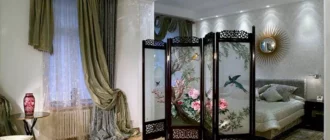
Street style in the interior is a familiar option for a resident of a modern metropolis
Street style in the interior is a direction of design, which is characterized by the widespread use of elements of the paraphernalia of a big city in the design of housing. This style gives the room the charm of colorful hooliganism and fills it with the energy of a modern metropolis.
Street style in the interior is the choice of residents who are in love with the urban landscape of their city, as well as rebels who protest against the boring rules of traditional interior design. It destroys the usual stereotypes of interior decoration of rooms and has much in common with another popular trend – the loft.


Features
Street style in the interior creates the illusion of being not inside, but outside the premises, but in much more comfortable conditions than in the open air. The implementation of the original design project does not require large financial costs, so this direction is ideal for today’s youth.


The main features of the street style in the interior include:
- Rough wall decoration in the form of ordinary brickwork. There should not be any glossy surfaces and wallpapers with drawings.
- Stylization of furniture for a telephone booth. It can be a closet, a home library, a dressing room or even a shower.
- Widespread use of graffiti for wall decoration. Bright drawings are ideal for masking all sorts of defects in finishing and space zoning, and if desired, the walls can always be repainted.
- Plain plain ceilings with massive wooden beams. Most often they are left white for visual contrast with other interior elements.
- Original lighting fixtures. Instead of chandeliers and floor lamps, spotlights or stylized street lamps are installed.
- Wall murals and prints on the theme of the urban landscape. Panoramic shots depicting illuminated highways and avenues leaving the horizon visually expand the space.
- Elements of outdoor advertising and navigation signs. It can be neon signs and banners, posters and posters, road signs, signs and signs.


The peculiar atmosphere of street style is successfully complemented by a massive watch with a large dial, which is usually found at the station or in the city center. Bright graffiti can decorate not only walls, but also pieces of furniture. In spacious rooms, the placement of a small vehicle becomes a special chic.
The history of street style in the interior
The history of street style in the interior dates back to the 50s of the last century. At that time, the streets of most working districts of European and American metropolitan areas were a clear reflection of the end of the industrial age, and the loft style was rapidly gaining popularity in interior design.


The street was an integral part of the cultural life of young people, it shaped the lifestyle and fashion trends. In addition, many people did not have enough money to purchase expensive housing, but there were plenty of offers for renting out former industrial buildings for apartments.
Having settled in such places, yesterday’s students tried to arrange a simple life in their home by all available means. To decorate the situation, they used signs, signs, lanterns and other elements of everyday life in a big city, and did not attach much importance to wall decoration. This is how a new style of interior appeared, to which most people initially treated negatively. But already in the early 1960s, the situation changed after many celebrity celebrities became fans of a loft similar in spirit.


Street style interiors remain a trendy design trend these days.
It is still loved by young people, and people of the older generation choose it in order to create in their home the atmosphere of the exciting life of a large metropolis familiar from a young age.


















